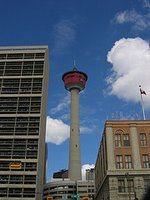Alberta's Homeownership Costs Continue to Climb

Alberta's housing affordability continued to deteriorate in the fourth quarter of 2005 as income growth was unable to match the pace of price appreciation, according to a new report released today by RBC Economics.
"Throughout 2005, Alberta's housing affordability steadily eroded in all classes of homes," said Derek Holt, assistant chief economist, RBC. "Rapid price growth is fuelling this deterioration with the annual pace of price growth for a two-storey home in Alberta leading the country."
According to the report, the booming energy sector has impacted almost all sectors of Alberta's economy, but has particularly heated up the housing market. Builders took out more permits to fill growing demand, housing starts were up 12.6 per cent in 2005, and employment growth remains robust with 3.5 per cent more jobs in February 2006 compared to a year ago.
The RBC Affordability Index, which measures the proportion of pre-tax household income needed to service the costs of owning a home, stands at 19.2 per cent for a standard condo in Alberta, the most affordable housing type. A standard townhouse is next at 21 per cent followed by a detached bungalow at 29.9 per cent. A standard two-storey home remains the least affordable with an index reading of 33 per cent.
Furthermore, housing supply remains very tight with residential unit sales up 40 per cent in January compared to last year, while house listings cannot keep pace with demand. "Alberta's hot economy is creating significant capacity shortages affecting the supply of raw and intermediate resources plus labour, and this is partly behind a doubling of price growth in the fourth quarter compared to the previous quarter that has pushed year-over-year price appreciation into double-digit territory in all classes of homes," said Holt.
The fourth quarter of 2005 marked Calgary's most significant deterioration in affordability for the year in all housing classes. Rising construction costs and skilled labour shortages sent house prices climbing. After three quarters of steady year-over-year price growth in the five-to-eight per cent range, the last quarter of 2005 price growth nearly doubled in all of Calgary's housing classes. Widespread price appreciation, modestly higher mortgage rates, and higher utility bills contributed to the deterioration.


0 Comments:
Post a Comment
<< Home